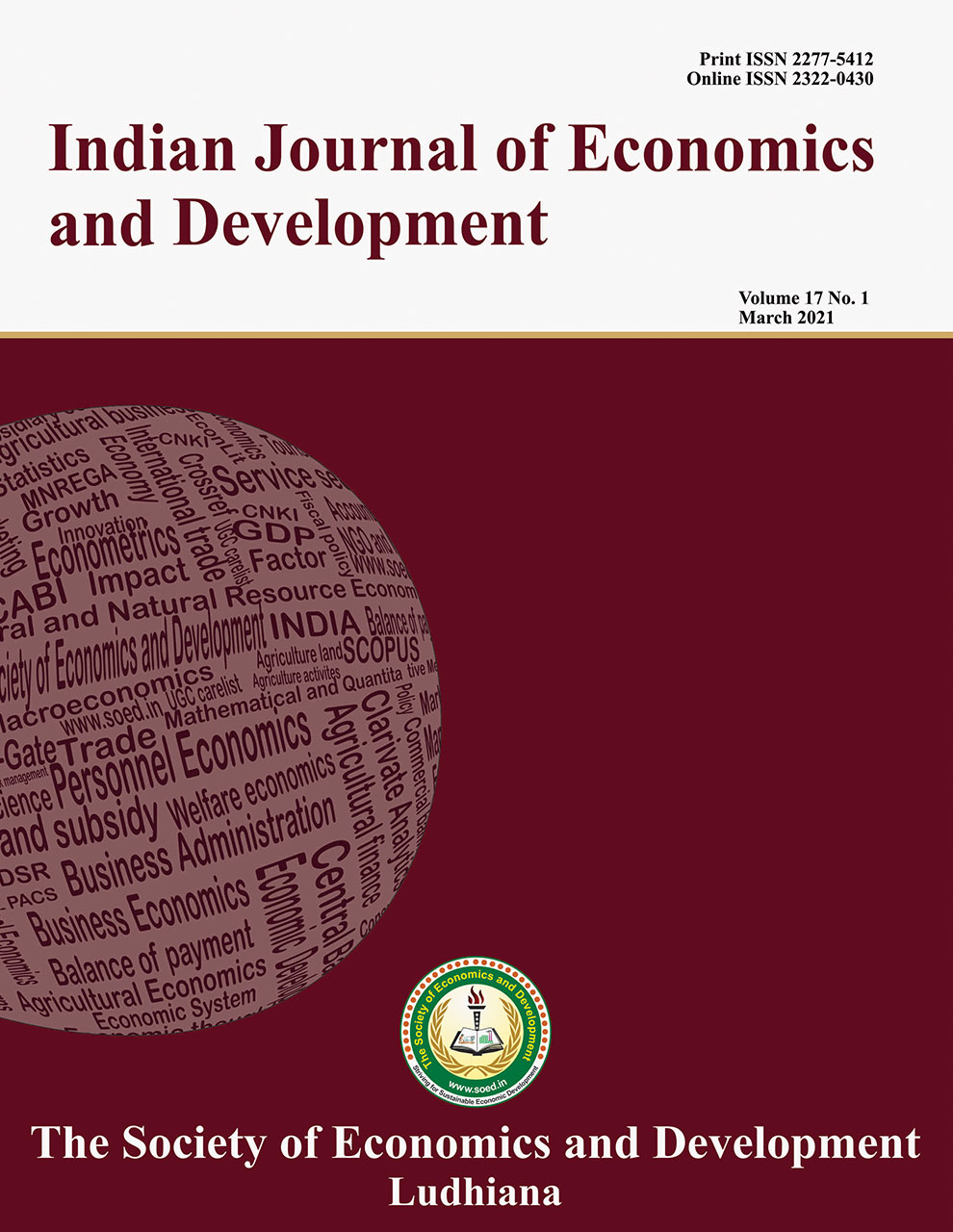A Comparative Evaluation of Trends in Area, Production and Productivity of Cashew in Western and Eastern Regions of India

Price: ₹ 500
Author: M. Kandeeban , K. Mahendran and Moghana Lavanya S 1 2* 3
Author Address: 1 2 3 Ph.D. Scholar, Professor and Assistant Professor, Department of Agricultural and Rural Management, Tamil Nadu Agricultural University, Coimbatore-641003 (Tamil Nadu)
Keywords: Economic benefits, geographical distribution, growth rate, varietal differences.
JEL Codes: C23, Q00, Q19.
Abstract
Cashew is an economically important tropical crop. On average, 52 percent of the raw cashew nut processed in India was imported. In recent years, the decreased supply of raw cashew nuts and increased demand for processing forced the cashew sector to concentrate on increased domestic production. To understand the area, production and productivity scenario of cashew nut; India was divided into eastern and western regions based on the traditional area of cashew cultivation along the coasts. The growth in the area under cashew and production of cashew nuts were examined from 2000-01 to 2017-18. Compound Annual Growth rate of area for eastern and western regions was 2.98 and 1.06 percent respectively. The growth rate of production was calculated as 2.08, and 3.55 percent and productivity growth were calculated to be 2.98 and 1.06 percent for eastern and western regions, respectively. The overall average productivity of different varieties in the western and eastern regions was 16.08 and 10.83 kilograms per tree.
Description
Indian Journal of Economics and Development
Volume 16 No. 4, 2020, 565-571
DOI: https://doi.org/10.35716/IJED/19054
Indexed in Clarivate Analytics (ESCI) of WoS
Scopus: Title Accepted
NAAS Score: 4.82



